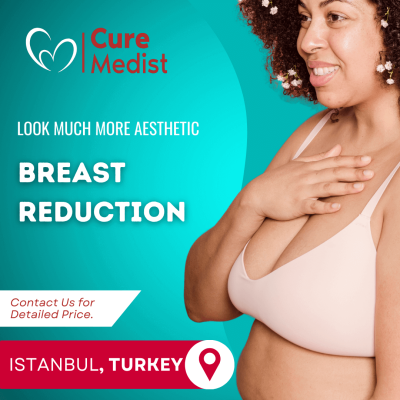Breast reduction, also known as reduction mammoplasty, is a surgical procedure designed to reduce the size and weight of large breasts. This procedure aims to alleviate physical discomfort and improve the proportions of the breasts relative to the rest of the body. Here’s a detailed overview:
What is Breast Reduction?
Breast reduction surgery involves the removal of excess breast tissue, fat, and skin to achieve a breast size that is more proportional to the body and to alleviate discomfort associated with overly large breasts.
Indications for Breast Reduction:
- Physical Discomfort: Chronic pain in the back, neck, and shoulders caused by the weight of large breasts.
- Skin Irritation: Rashes or skin irritation under the breasts.
- Bra Strap Grooves: Deep grooves in the shoulders from bra straps.
- Posture Problems: Poor posture due to the weight of the breasts.
- Activity Limitations: Difficulty participating in physical activities or exercise.
- Self-Image Issues: Psychological distress or self-consciousness about breast size.
Procedure:
- Initial Consultation:
- Assessment: The surgeon evaluates the patient’s breast size, shape, skin quality, and overall health. Measurements and photographs may be taken for medical records.
- Discussion: The patient discusses their goals and expectations, and the surgeon explains the available techniques, potential outcomes, and risks.
- Pre-Operative Preparations:
- Anesthesia: The procedure is typically performed under general anesthesia.
- Incision Options: The choice of incision depends on the size and shape of the breasts, the amount of reduction needed, and the patient’s preferences. Common techniques include:
- Anchor Incision (Inverted-T): Around the areola, vertically down to the breast crease, and along the breast crease.
- Lollipop Incision: Around the areola and vertically down to the breast crease.
- Donut Incision (Periareolar): Around the areola only, for smaller reductions.
- Surgical Steps:
- Removal of Tissue: The surgeon removes excess breast tissue, fat, and skin to achieve the desired breast size.
- Reshaping: The remaining breast tissue is reshaped to create a natural contour.
- Nipple Repositioning: The nipples and areolas are repositioned to a higher, more youthful location. In some cases, the size of the areolas may be reduced.
- Liposuction: In some cases, liposuction may be used to remove excess fat from the sides of the breasts or underarms.
- Closure and Bandaging:
- Incisions are closed with sutures, skin adhesives, or surgical tape. The breasts are bandaged, and a support bra is typically provided to minimize swelling and support the breasts as they heal.
Recovery:
- Immediate Post-Operative Care:
- Monitoring: The patient is monitored in a recovery area until they are stable enough to go home.
- Dressings and Support: Bandages and a surgical support bra are applied to minimize swelling and support the breasts during healing.
- Short-Term Recovery:
- Pain Management: Pain and discomfort are managed with prescribed medications.
- Activity Restrictions: Patients are advised to rest and avoid strenuous activities, heavy lifting, and raising their arms above their head for several weeks.
- Follow-Up Appointments: Regular check-ups are scheduled to monitor healing, remove sutures, and address any concerns.
- Long-Term Recovery:
- Swelling and Bruising: These typically subside over a few weeks.
- Scar Management: Scars will fade over time but may take several months to a year to fully mature. Scar treatments and silicone sheets may be recommended.
- Final Results: The final shape and position of the breasts may not be fully apparent until several months after surgery.
Benefits:
- Alleviation of Physical Discomfort: Reduction in chronic pain in the back, neck, and shoulders.
- Improved Mobility: Easier participation in physical activities and exercise.
- Enhanced Proportions: More proportional breast size relative to the body.
- Improved Self-Image: Enhanced body image and self-confidence.
Suitability:
- Good Candidates: Individuals in good overall health with realistic expectations who experience physical or psychological distress due to large breasts.
- Non-Smokers: Smoking can impair healing and increase the risk of complications.
- Stable Weight: Significant weight fluctuations can affect the results of the surgery.
Breast reduction is a highly individualized procedure that should be carefully considered and thoroughly discussed with a qualified plastic surgeon. The goal is to achieve a breast size that is comfortable and aesthetically pleasing, alleviating the physical and emotional burdens associated with overly large breasts.




